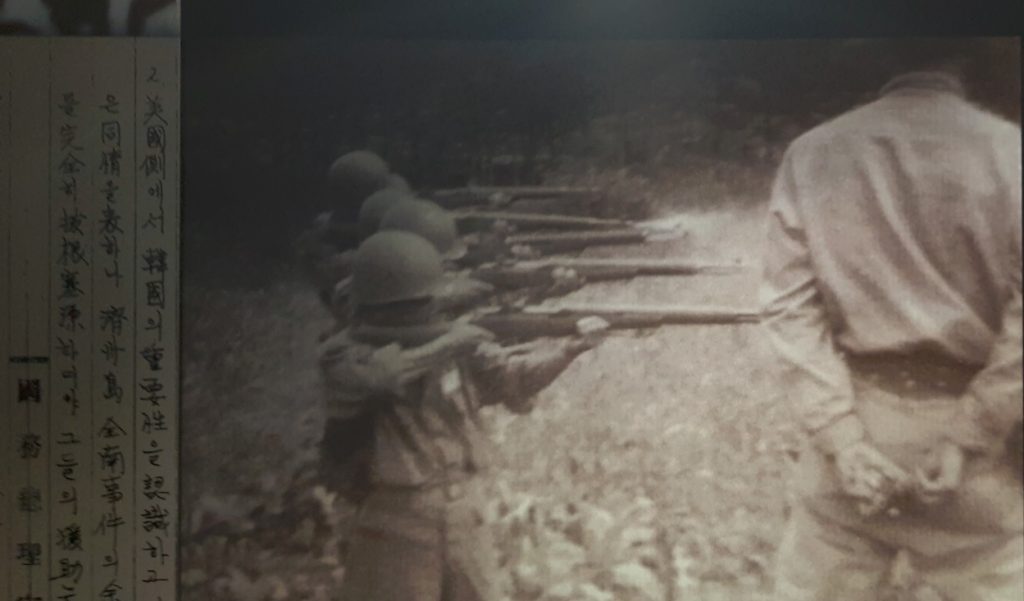Korea’s Former Massacre Island Call the World to Bring Perpetrators to Justice
Story and photos by Chhay Sophal
Cambodia News

Speaking in his welcoming dinner to a group of 70 journalists from 50 countries led by the Seoul-based Journalists Association of Korea last Friday, Yang Yoon-Kyung, Chairman of the Association for the Bereaved Families 4.3 Victims in Jeju, urged international journalists to help outreach information on Jeju’s killing fields that was silent for a haft century.
Yoon-Kyung said those who were responsible for the massacre must be brought for justice so that no nightmare happens again on the earth.
Though Yoon-Kyung did not mention any name in his remarks, the United of States of America is the target for Jeju islanders whose people were killed and tortured by the US-military-backed Korean armed forces started from Japan’s colony ended in Korea.
4.3 is known as SASAM in Koreans or April 3 in 1948 when uprising massacre occurred in the island up to September 1954 and during this period of time 300.000 Jeju islanders were murdered on the streets and in the fields throughout Jeju.
According to a news release and book handed to international journalists in Jeju last Friday, the uprising happened after 6 people were gunned downed and 8 other wounded by the US-supported armed forces while more than 200 others were being arrested and tortured in the afternoon of March 1st, 1947.
The 6 were shot dead instantly during Jeju islanders made a protest against a mounted police officer who hit a boy injured in the morning of March 1st and the officer left with ignoring and such act made people outrage, the report and book write.
Based on the Korean history, after Korea was liberated from Japan’s colony in 1945 by the alliance troops, Jeju Islanders did not agree with the division of Korea and they protested against the move when South Korea was occupied by American troops and the North was under control of the Communist Soviet Union [Russia].
Due to opposing the Korean division in 1947 and boycotting election to establish the South Korean authority in 1948, Many Jeju islanders were accused of the leftists who were pro communist ideology. Then SASAM happened leading to the death of 300.000 people of 30% of Jeju population.
About 50 years after September 1954, Jeju inhabitants were shut up for the massacre in their island due to suppression from the authority.
Go Wan-soon, 80, is now the chairperson of senior villagers association in Jeju’s Buk Chon village. 70 years ago, Wan-soon was 9 years old seeing by her own eyes that many people, including children and pregnant ladies, were shot dead and tortured on the streets and in the fields while her home and school were getting burned down by the US-backed rightest armed forces.
Speaking through an interpreter at ‘Jeju April 3 Peace Memorial Hall’ to the 70 international journalists led by the Journalists Association of Korea last Friday, Wan-soon pointed out that the United States had to be responsible for the tragedy because it supported the Korean armed forces during the time of massacre.
